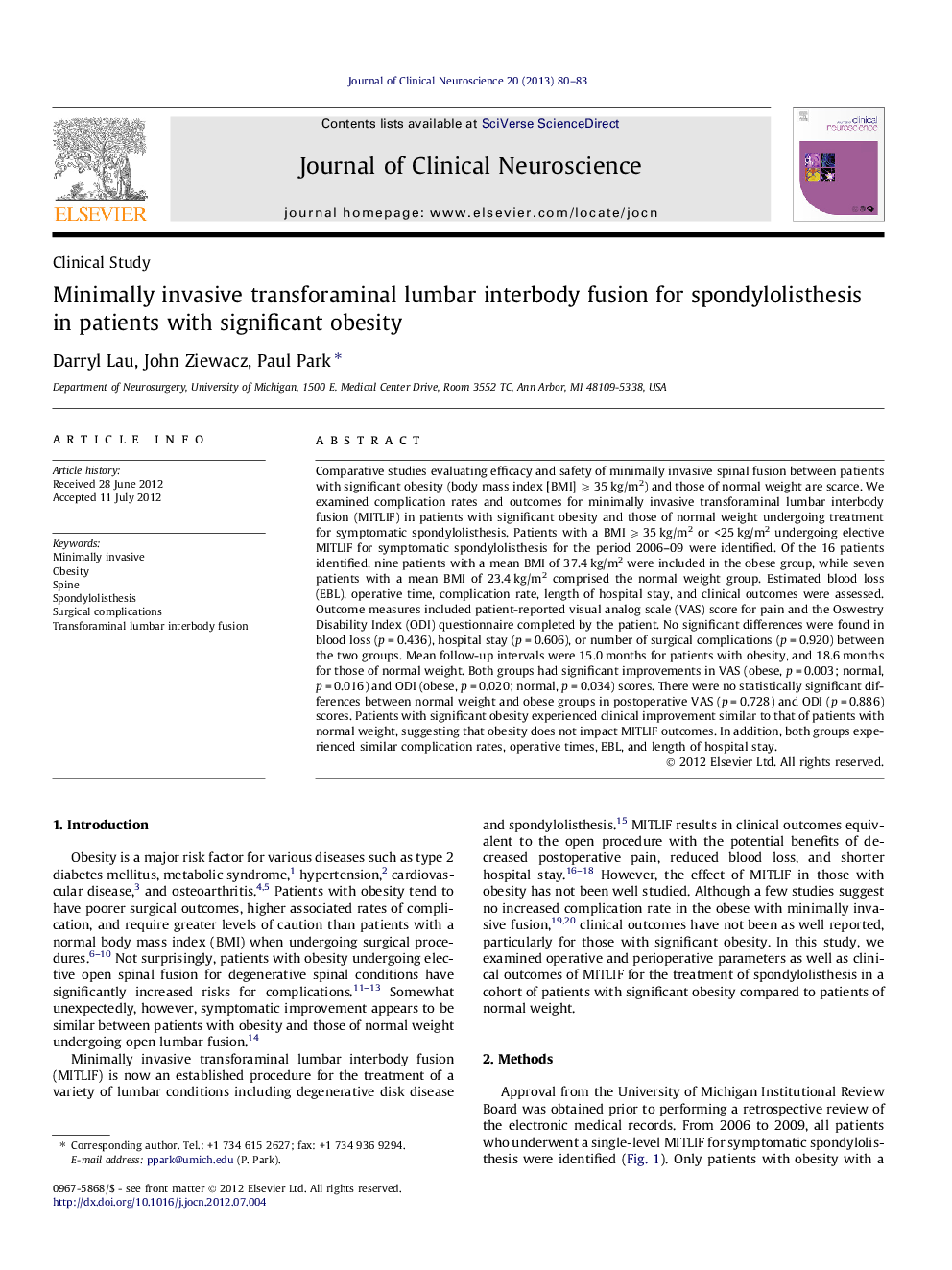| Article ID | Journal | Published Year | Pages | File Type |
|---|---|---|---|---|
| 3059873 | Journal of Clinical Neuroscience | 2013 | 4 Pages |
Comparative studies evaluating efficacy and safety of minimally invasive spinal fusion between patients with significant obesity (body mass index [BMI] ⩾ 35 kg/m2) and those of normal weight are scarce. We examined complication rates and outcomes for minimally invasive transforaminal lumbar interbody fusion (MITLIF) in patients with significant obesity and those of normal weight undergoing treatment for symptomatic spondylolisthesis. Patients with a BMI ⩾ 35 kg/m2 or <25 kg/m2 undergoing elective MITLIF for symptomatic spondylolisthesis for the period 2006–09 were identified. Of the 16 patients identified, nine patients with a mean BMI of 37.4 kg/m2 were included in the obese group, while seven patients with a mean BMI of 23.4 kg/m2 comprised the normal weight group. Estimated blood loss (EBL), operative time, complication rate, length of hospital stay, and clinical outcomes were assessed. Outcome measures included patient-reported visual analog scale (VAS) score for pain and the Oswestry Disability Index (ODI) questionnaire completed by the patient. No significant differences were found in blood loss (p = 0.436), hospital stay (p = 0.606), or number of surgical complications (p = 0.920) between the two groups. Mean follow-up intervals were 15.0 months for patients with obesity, and 18.6 months for those of normal weight. Both groups had significant improvements in VAS (obese, p = 0.003; normal, p = 0.016) and ODI (obese, p = 0.020; normal, p = 0.034) scores. There were no statistically significant differences between normal weight and obese groups in postoperative VAS (p = 0.728) and ODI (p = 0.886) scores. Patients with significant obesity experienced clinical improvement similar to that of patients with normal weight, suggesting that obesity does not impact MITLIF outcomes. In addition, both groups experienced similar complication rates, operative times, EBL, and length of hospital stay.
